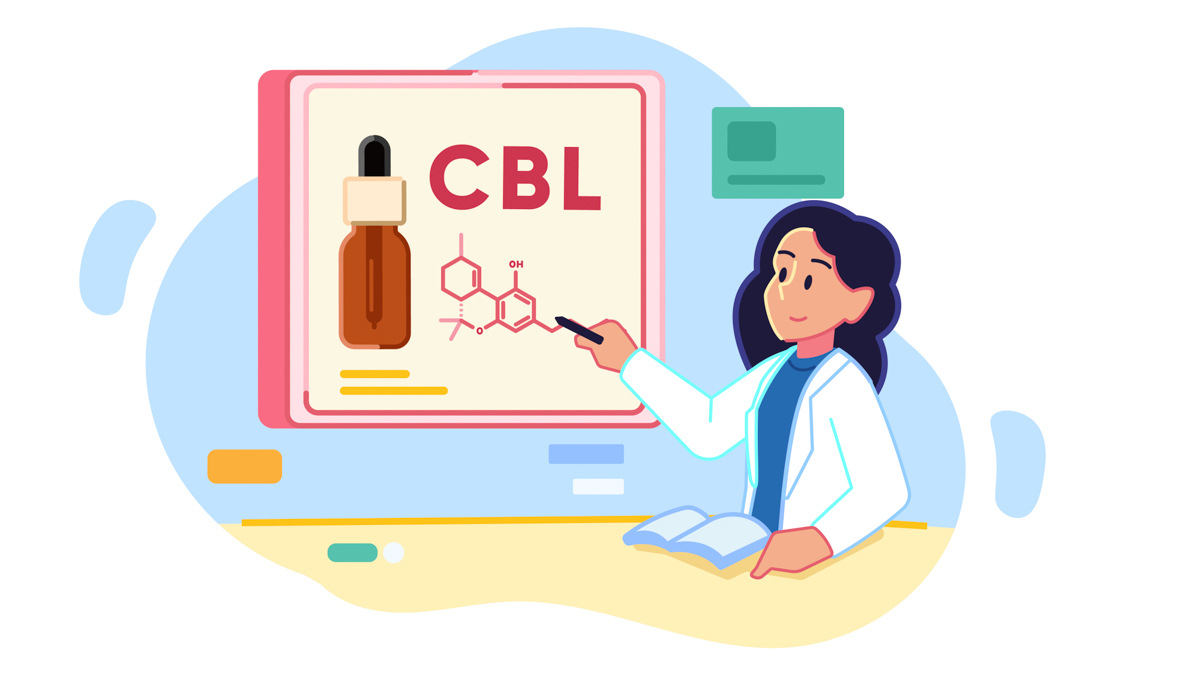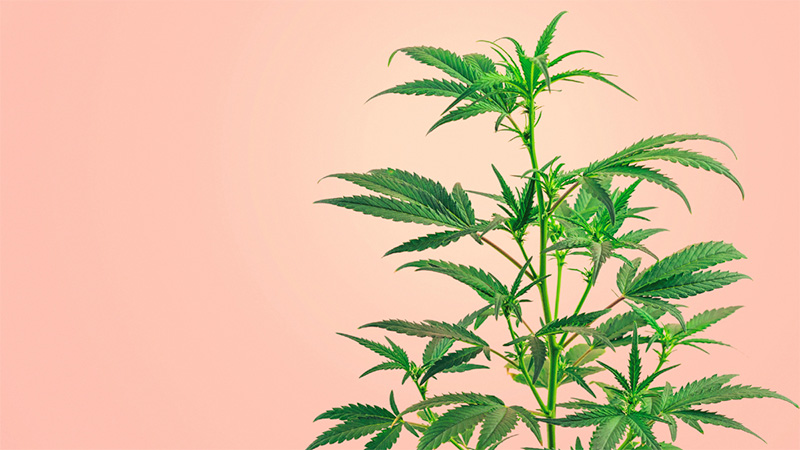What Is CBL (Cannabicyclol)?

Cannabicyclol (CBL) is a rare and under-researched compound that you can find in trace amounts in hemp and marijuana plants.
It’s non-psychotropic, so it won’t get you high.
In this article, we present everything there is to know about CBL, its role in the effects of cannabis, and its future in the cannabinoid space.
Keep in mind that CBL hasn’t been clinically studied yet. All information you’ll find in our guide is based on anecdotal reports and the CBL’s biological traits.
What Is CBL?
CBL is a minor cannabinoid, meaning that cannabis plants only produce it in trace amounts.
Its discovery dates back to the 1960s when Korte and Sieper first isolated it years before other researchers, such as Gaoni, Mechoulam, and Claussen, mapped out its chemical structure.
Unlike most cannabinoids, CBL isn’t directly synthesized by cannabis. Instead, it’s formed when another cannabinoid — cannabichromene (CBC) — degrades. This process is slow and produces insignificant amounts of CBL, making it difficult to study.
CBL’s chemical structure resembles that of cannabinol (CBN), but it doesn’t have the double-bond structure that provides CBN with mild psychoactive properties.
The effects of CBL can be considered similar to those of CBD, which means it can produce its health benefits without intoxication.
Is CBL Natural or Synthetic?
Like all phytocannabinoids, CBL is a natural compound occurring in hemp and marijuana plants. However, they have too little CBL to make direct extraction cost-efficient.
Although cannabis plants don’t synthesize CBL directly — it forms when the plant is exposed to UV light — that doesn’t make it less natural.
After all, the major cannabinoids (THC and CBD) also derive from another cannabinoid — cannabigerolic acid (CBGA).
How Is CBL Extracted?
Unlike the major cannabinoids like THC, CBD, and CBG, CBL isn’t yet present in consumable products. Most of the time, scientists extract it for research purposes.
CBL is formed when CBC degrades due to exposure to ultraviolet light or heat. This mechanism causes older cannabis strains to have higher concentrations of CBL than young flowers, but even then, the amount is insignificant.
Since the CBL content in cannabis is so low, researchers synthesize it using artificial methods. Considering the general lack of interest in the commercial use of CBL, we won’t see mass-produced CBL extracts in the near future.
CBL Effects
We know very little about the effects of CBL because it hasn’t been studied yet. Many scientists believe it might have a similar effect profile to CBD, although this theory is based on indirect evidence.
We also don’t have any human studies of CBL’s effects, so any information about how it works is purely anecdotal.
CBL Benefits
There are also no studies on the health benefits of CBL. Steep Hill, a laboratory that analyzes the chemical properties of cannabinoids, claims that the cannabinoid may offer remarkable anti-inflammatory and anti-tumor effects.
However, the medical community takes this news with a grain of salt, suggesting that more research is needed before we can draw any conclusions.
Given its similar structure to CBD, CBL may offer the following health benefits:
- Anti-inflammatory
- Pain killer
- Sleep aid
- Nausea and vomit relief
- Anticonvulsant
- Anxiety treatment
- Appetite booster
- Tumor growth inhibition
How Does CBL Work?

All cannabinoids produce their effects through the endocannabinoid system (ECS). The essential components of the ECS are two receptors: CB1 and CB2.
CB1 receptors occur in the brain and central nervous system. They control motor function, coordination, pain signaling, emotion processing, mood, appetite, and neurogenesis.
CB2 receptors are mostly found in the immune and peripheral nervous systems; they play no role in modulating the psychoactivity of a cannabinoid. They do, however, influence essential functions like immune responses and metabolism.
CBL research is in the early stages but seems to have no affinity for either cannabinoid receptor. It’s within reason to assume that CBL has more of a modulatory effect on the endocannabinoid system — similar to CBD.
Is CBL Legal?
Yes, CBL is legal, but it must come from hemp and contain no more than 0.3% delta-9 THC on a dry-weight basis.
The United States federal government legalized hemp under the 2018 Farm Bill and all hemp-derived cannabinoids. Individual states may ban CBL in the future, although none have taken such steps so far.
On an international level, CBL isn’t included in the United Nations’ 1971 Convention on Psychotropic Substances. Its legality is up to decide for individual countries.
Is CBL Safe?
As you may guess, there’s almost no research into the side effects of CBL. There was only one study on rabbits conducted in 1976. The researchers first fed animals with 1 mg/kg, and that didn’t bring any results. When they increased the dose to 8 mg/kg, one rabbit died, and the experiment was halted.
However, the study was too small and didn’t offer any conclusions; the rabbit might as well have had genetic flaws that could’ve influenced its reaction to the cannabinoid.
In fact, some scientists and experts believe that CBL doesn’t have any harmful effects.
CBL vs. CBD: What’s the Difference?
The most vivid difference between CBL and CBD (short for cannabidiol) is that the latter has been extensively researched in the last few decades. We know almost nothing about CBL’s pharmacological effects in humans.
The other major difference is the amount of each cannabinoid hemp plants produce. Depending on the strain and ratios between CBD and THC, the CBD content in cannabis may range between 2% and 20%, while CBL rarely goes beyond 0.5%.
Will CBL Get You High?
Preliminary research on the effects of CBL suggests that the cannabinoid has little to no binding affinity for CB1 and CB2 receptors.
The lack of the double-bond structure makes it unable to produce any psychoactive effects.
Many experts believe that CBL resembles CBD’s effects in most aspects, especially when you look at their chemical structure and how they engage with the endocannabinoid system.
Key Takeaways on CBL
CBL will definitely find its spot in the mainstream cannabinoid space. However, more research is needed to reveal its therapeutic potential and shed light on its safety profile.
We know little about CBL compared to THC and CBD, making it available mostly for research purposes. However, as more studies are conducted on CBL’s qualities, you may expect greater interest from the commercial market.